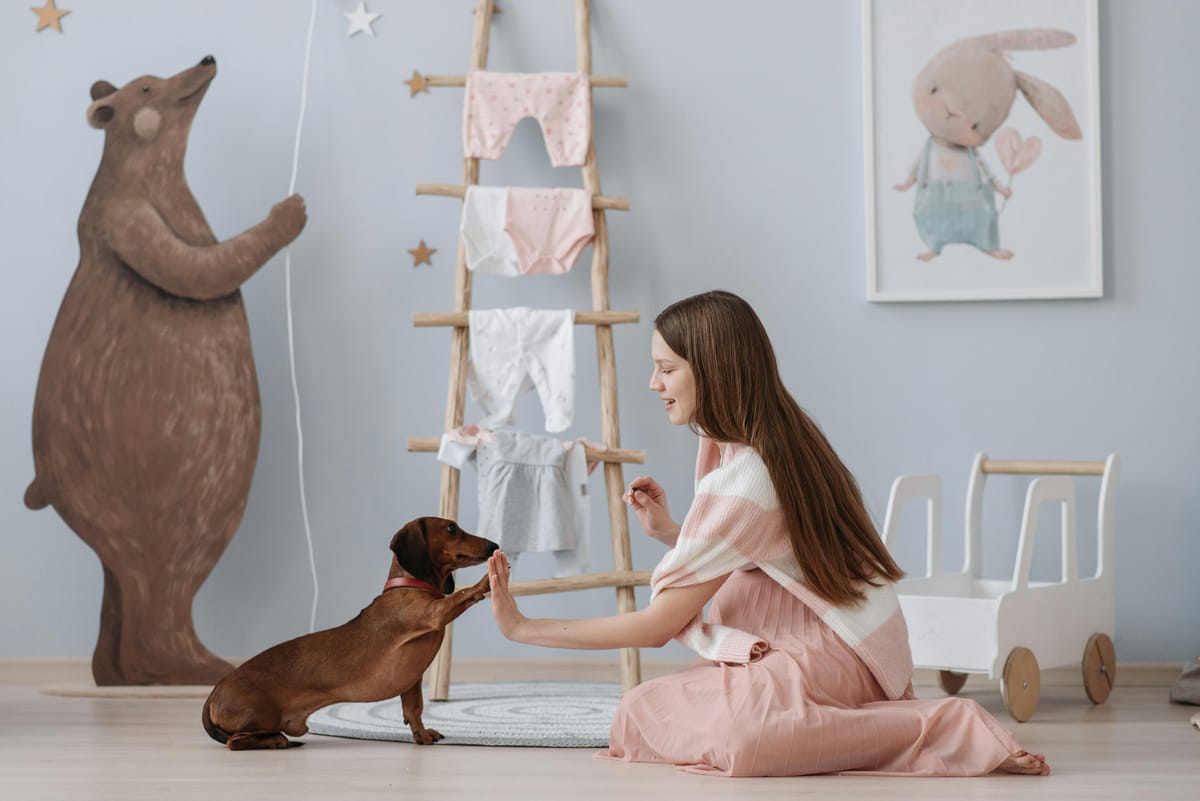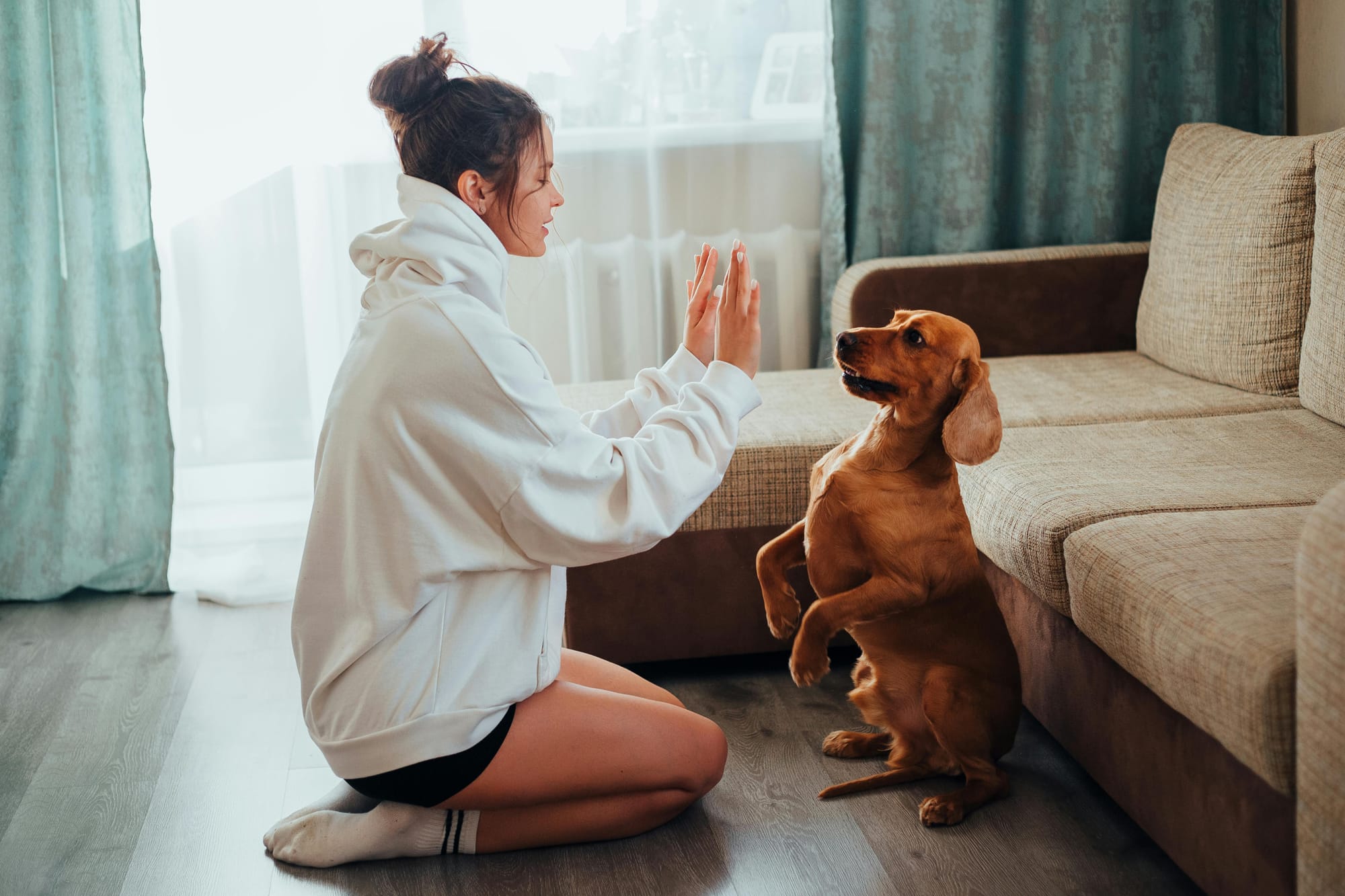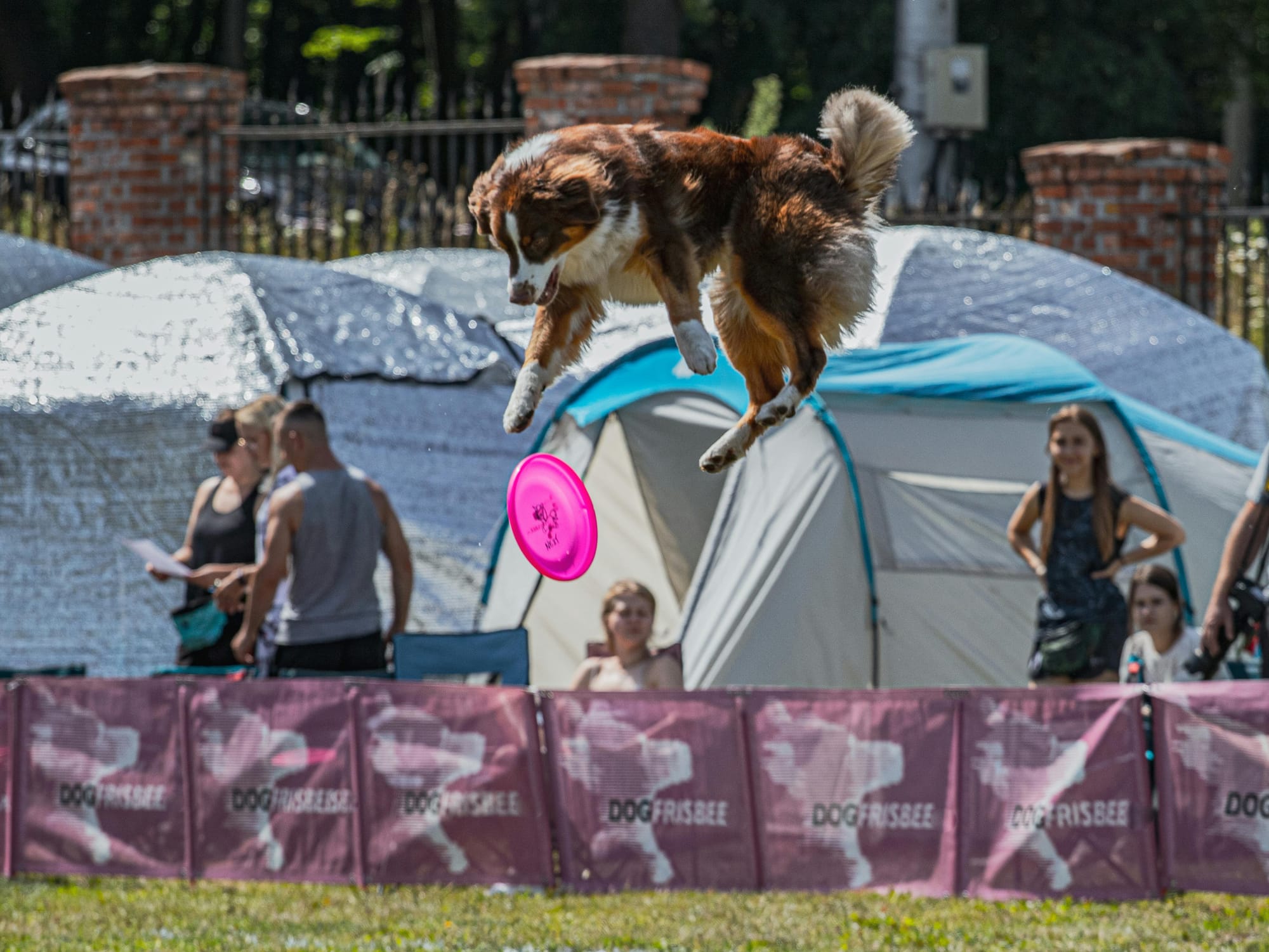10 Fun Tricks to Teach Your Dog: Essential Cues for Training Puppies

Training your dog can be one of the most rewarding experiences for both you and your furry friend. Teaching your puppy essential cues and fun tricks not only helps in building a strong bond but also reinforces good behavior. In this article, we will explore ten exciting tricks to teach your dog, focusing on various aspects of dog training, including positive reinforcement, keeping training sessions effective, and the importance of mental stimulation.
What Are the Best Tricks to Teach Your Dog?
How to Teach Your Dog Basic Cues?
When you begin the journey of dog training, focusing on basic cues is essential. Teaching your puppy commands like "sit," "down," and "stay" lays the foundation for more complex tricks. To teach your dog these basic cues, start with a quiet environment to minimize distractions. Use a treat to lure your dog into the desired position and say the cue clearly. For instance, to teach "sit," hold a treat above your dog's nose and slowly move it backward over their head. As they lower their rear to follow the treat, praise them enthusiastically and give them the treat when they sit. This method reinforces the behavior you want, making it easier for your dog to respond to the cue in the future.
What Fun Tricks Can I Teach My Puppy?
Once your pup has mastered the basics, you can introduce fun tricks to keep them engaged and excited about training, allowing your pet to relax and enjoy the process. Tricks like "shake paw," "roll over," and "play dead" are excellent choices. To teach "shake paw," gently lift your dog's paw while saying the cue. Reward them with a treat immediately after. For "roll over," have your dog lie down, then use a treat to guide them onto their side and back onto their feet, rewarding each successful movement. Incorporating fun tricks not only enhances your dog’s skill set but also encourages them to learn and engage with you during training sessions.
How Do I Choose Tricks for Different Dog Breeds?
When deciding which tricks to teach your dog, consider their breed, temperament, and physical capabilities. For example, some breeds are more inclined to perform complex tricks due to their intelligence and agility, while others may excel in basic cues. Tailoring your training to your dog's unique attributes can significantly enhance their learning experience. For instance, agile breeds like Border Collies may enjoy tricks that involve jumping or weaving, whereas more laid-back breeds might prefer simpler commands. Understanding your dog’s behavior and strengths will help you select tricks that will make training enjoyable for both of you.

How Can Positive Reinforcement Help in Dog Training?
What Types of Rewards Work Best for Dogs?
Positive reinforcement is a powerful tool in dog training that encourages your puppy to repeat desired behaviors. Rewards can take various forms, including treats, praise, toys, or playtime. It’s essential to choose rewards that resonate with your specific dog; some may respond better to treats, while others may be more motivated by play. For effective training, always have a variety of rewards on hand to keep your dog engaged and motivated. Remember, the goal is to make your dog feel good about learning and responding to cues.
How to Use Praise Effectively in Training Sessions?
Praise is a crucial aspect of positive reinforcement. Using a cheerful tone and enthusiastic body language can significantly impact your dog's learning process. Whenever they perform a trick correctly, say "good" and give them a treat immediately. This immediate feedback helps your dog associate the action with a positive outcome. Additionally, incorporating verbal praise into your training sessions creates a supportive environment, encouraging your dog to engage more actively in the process.
Can Treats Help Teach Your Dog New Tricks?
Treats are an invaluable tool in teaching your dog new tricks. They serve as a motivating factor that reinforces the desired behavior. When introducing a new trick, use treats to lure and guide your dog into performing the action. For example, if you are teaching your dog to "spin," hold a treat in front of their nose and slowly move it in a circular motion. As they follow the treat and spin, reward them for their effort. Over time, your dog will learn to associate the trick with getting a treat, making the learning process enjoyable and effective.

How to Keep Training Sessions Short and Effective?
What is the Ideal Duration for Dog Training Sessions?
Keeping training sessions short and effective is vital, especially when working with puppies. Generally, sessions should last no longer than 5 to 10 minutes, allowing your pet to relax and absorb the training effectively. Puppies have shorter attention spans, so frequent, brief sessions are more effective than long, drawn-out ones. During these sessions, focus on one or two tricks at a time, allowing your dog to absorb the information without becoming overwhelmed. This approach not only keeps your puppy engaged but also encourages them to look forward to training, fostering a positive bond between you and your canine.
How Can I Keep My Puppy Engaged During Training?
Engagement is key to successful dog training. To keep your puppy interested, incorporate play and interactive activities into your sessions. Use toys or games that require your dog to think and move, such as hide-and-seek with treats or a simple fetch game. Additionally, vary your training methods to prevent monotony and keep your pup excited about learning new skills. Changing locations or practicing in different environments can also help keep your dog stimulated and responsive during training.
What Happens If Training Sessions Are Too Long?
If training sessions are too long, your puppy may become frustrated or disinterested, leading to a negative experience. Prolonged sessions can also result in confusion, making it harder for your dog to learn new tricks. To avoid this, always monitor your dog's behavior during training. If they seem restless or distracted, it may be time to wrap up the session. Ending on a positive note, even if it's just a brief practice of a previously learned cue, will help reinforce their learning and keep their spirits high.
What Are Some Advanced Tricks to Teach Your Dog?
How to Gradually Introduce Complex Tricks?
As your dog becomes more proficient in basic cues, you can start introducing advanced tricks. The key is to gradually increase the complexity of the tasks. Start with simple variations of what your dog already knows, then build upon those skills, ensuring that you wait for your dog to grasp each concept. For example, if your dog can "sit," you might teach them to "sit pretty" by encouraging them to balance on their hind legs. Always ensure that your dog is comfortable with each step before moving on to the next, reinforcing their success along the way.
Can I Teach My Dog to Respond to Cues Without a Leash?
Teaching your dog to respond to cues without a leash can be an exciting challenge. To achieve this, it’s crucial to establish a strong recall command, such as "come." Begin practicing in a safe, enclosed area where your dog can roam freely. Use treats and praise to encourage them to come to you whenever you call, gradually increasing the distance between you and your dog. Once they consistently respond to the command off-leash, you can introduce distractions to further reinforce their training.
What Advanced Commands Should I Teach My Puppy?
Advanced commands like "fetch," "drop it," and "go to your mat" can provide mental stimulation for your dog while strengthening your bond. To teach "fetch," throw a toy and encourage your dog to retrieve it. When they bring it back, reward them with praise and a treat. "Drop it" can be taught by offering a treat when your dog has something in their mouth, encouraging them to release the item. These advanced commands not only challenge your dog but also keep them mentally engaged, promoting positive behavior.

How to Mentally Stimulate Your Dog While Training?
What Are Some Interactive Games to Teach Your Dog?
Interactive games can significantly enhance your dog's learning experience. Games like puzzle toys, scent work, or agility courses provide mental stimulation while reinforcing training cues. For instance, hide treats around the house for your dog to sniff out, encouraging them to use their natural instincts. Another fun game is the "which hand" trick, where you hide a treat in one hand and let your dog guess which hand it’s in. These games not only make training enjoyable but also encourage your dog to think critically and problem-solve.
How Can Playtime Be Incorporated into Training?
Incorporating playtime into training sessions can enhance learning and keep your dog engaged. For example, after practicing a few cues, reward your dog with a short play session using their favorite toy. This breaks up the monotony of training while also reinforcing the idea that good behavior leads to fun activities. Balance is key; make sure that playtime is a reward for completing tasks rather than a distraction during training.
Why is Mental Stimulation Important for Dog Behaviour?
Mental stimulation is essential for your dog's overall behavior and well-being. A bored dog can develop negative behaviors such as chewing, barking, or digging. Providing mental challenges through training and interactive games can channel your dog's energy into positive outlets. Regular mental stimulation keeps your dog happy, reduces stress, and fosters a strong bond between you and your furry friend. Always strive to engage your dog’s mind as much as their body for a well-rounded training experience.
Final Thoughts
In conclusion, training your dog is a journey that requires patience and dedication. As a trainer, your goal is to teach a dog commands like “sit”, “down”, and “stay”, while ensuring they’re comfortable and engaged throughout the process. Whenever they’re learning a new skill, it’s important to provide positive reinforcement training to encourage their progress. For example, they’ll respond better to commands when they receive a treat for their good behavior. You’ll need to get the treat ready as a signal for their success.
As you work your way through various training goals, remember that enrichment activities, like playing fetch, can enhance their health and well-being. I hope you enjoyed this blog and found it informative. I recommend that you get started with obedience training to help your dog become the best version of themselves. Good luck, and remember that they've got instincts that can be shaped with consistent training!




